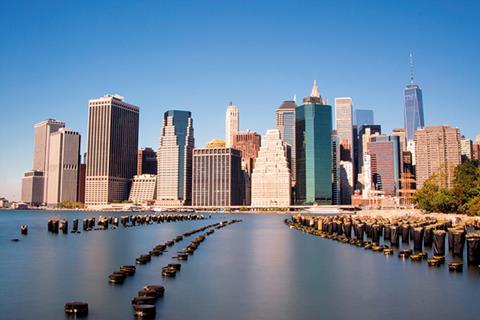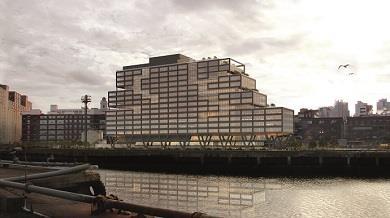The strength of New York City’s economy is its diversity.

If one sector falters, others pick up the slack. This is also one of the great attributes of New York’s commercial real estate market. The city’s talent and institutions attract companies, generate growth and boost demand for space. In the current expansion, this has occurred at a record-breaking pace.
As the US economy has recovered from the recession of 2008-09, the pace of growth has been uneven across the nation. Some metropolitan areas are much stronger than others.
These differences have largely depended on the industries located in these cities. Early on, the rise in the price of oil and the shale-oil revolution led to strong growth in such petroleum centres as Houston, Texas, and Tulsa, Oklahoma.
Similarly, the vibrancy of the technology sector has supported strong growth in cities such as San Francisco, California’s Silicon Valley, and Austin, Texas.

But one of the biggest surprises has been the consistently strong growth of the New York City economy. Between December 2009 and April 2016, payroll employment in the city has increased by 639,100 jobs. That’s more than were added in either the 1980s expansion or the 1990s internet-driven boom.
The pace of New York City job growth has been breathtaking. Since the end of 2009, employment growth has averaged 99,300 jobs per year. By contrast, in the 1980s the city added 37,100 jobs per year and in the 1990s the figure was 60,000.
This performance was completely unexpected in the aftermath of the recession. After all, that recession was triggered by a financial crisis, and New York City is a global financial centre.
Employment in financial services in the Big Apple accounts for 11.6% of all jobs. By contrast, nationwide the financial services sector accounts for only 6%. With this high concentration of jobs in the financial sector, New York City was expected to be one of the hardest-hit and slowest-recovering cities in the nation after the recession.

So what has caused the city’s remarkable performance? It wasn’t a recovery in the financial sector. There are still fewer financial services jobs in New York City today than before the recession.
But that weakness has been offset by expansion in three other areas: tourism; the creative and technology sectors; and education and health.
New York City has become a tourist mecca over the past decade. In 2004, 39.9 million visitors came to the city. In 2015, that had grown nearly 50% to 58.3 million. This huge influx of tourists has led to a surge in employment in the leisure and hospitality sectors as well as the retail sector, adding more than 178,000 jobs since the recession ended.
While tech hubs such as Silicon Valley, San Francisco and Boston remain key to that sector, New York has itself grown as a centre of creative and technology companies known as TAMI (tech, advertising, media and information).
As of April, the TAMI sector had added approximately 81,500 jobs since the end of 2009.

Finally, the healthcare sector has been a stalwart of this expansion, both nationally and locally. Nationwide, healthcare employment has increased by more than 2.3 million jobs, or 14.1%, since the recession’s end. In New York City, the sector has added 99,000 jobs, which equates to a 17% increase.
As the location of many academic medical centres and leading healthcare research organisations, New York City has also seen rising investment in health-related start-ups.
Thanks to the diversity and resilience of its economy, New York City is maintaining strong and steady levels of employment - and that’s been the primary contributor to the strength and durability of the city’s commercial real estate market.
Ken McCarthy is principal economist at Cushman & Wakefield





























No comments yet